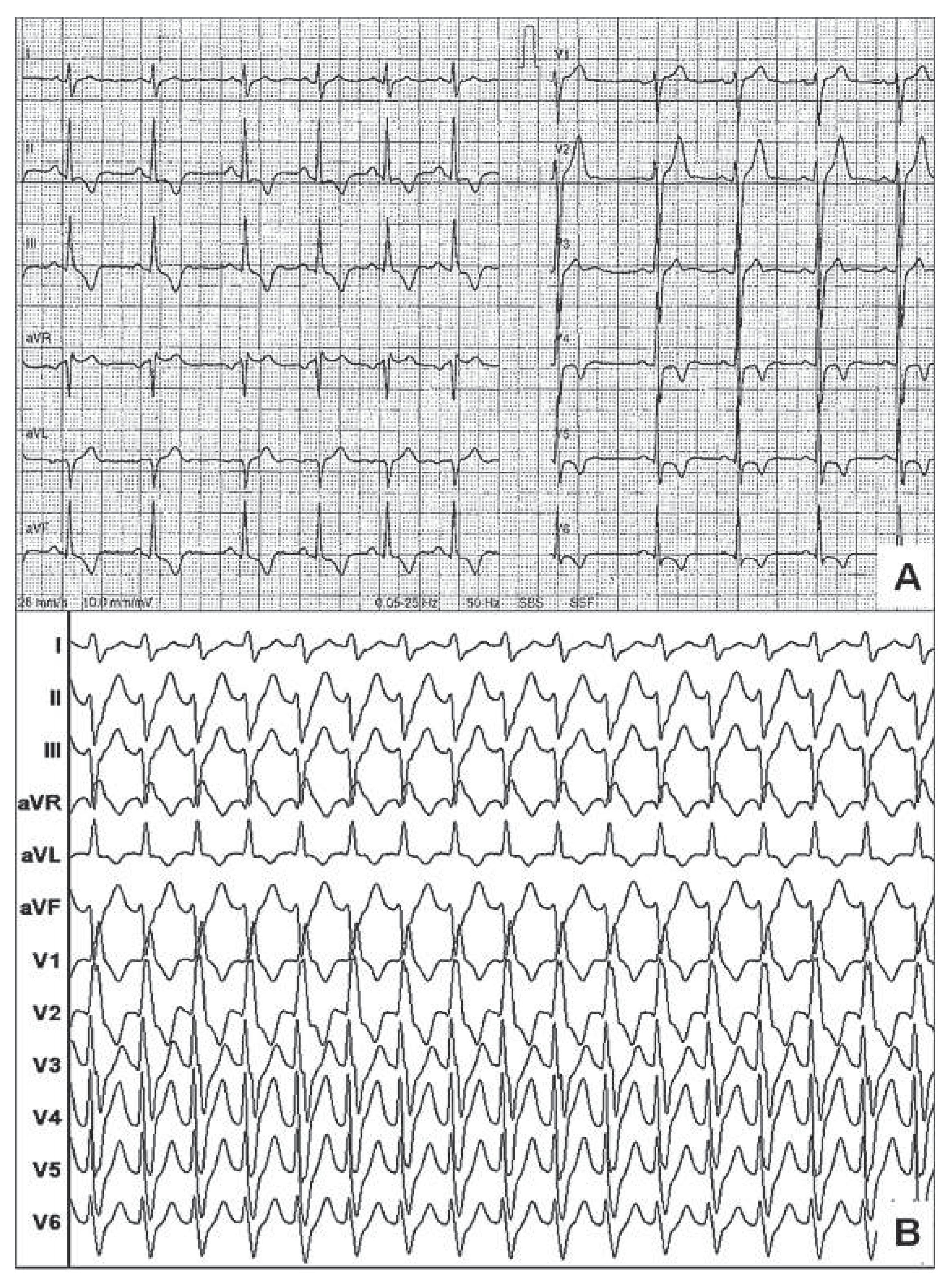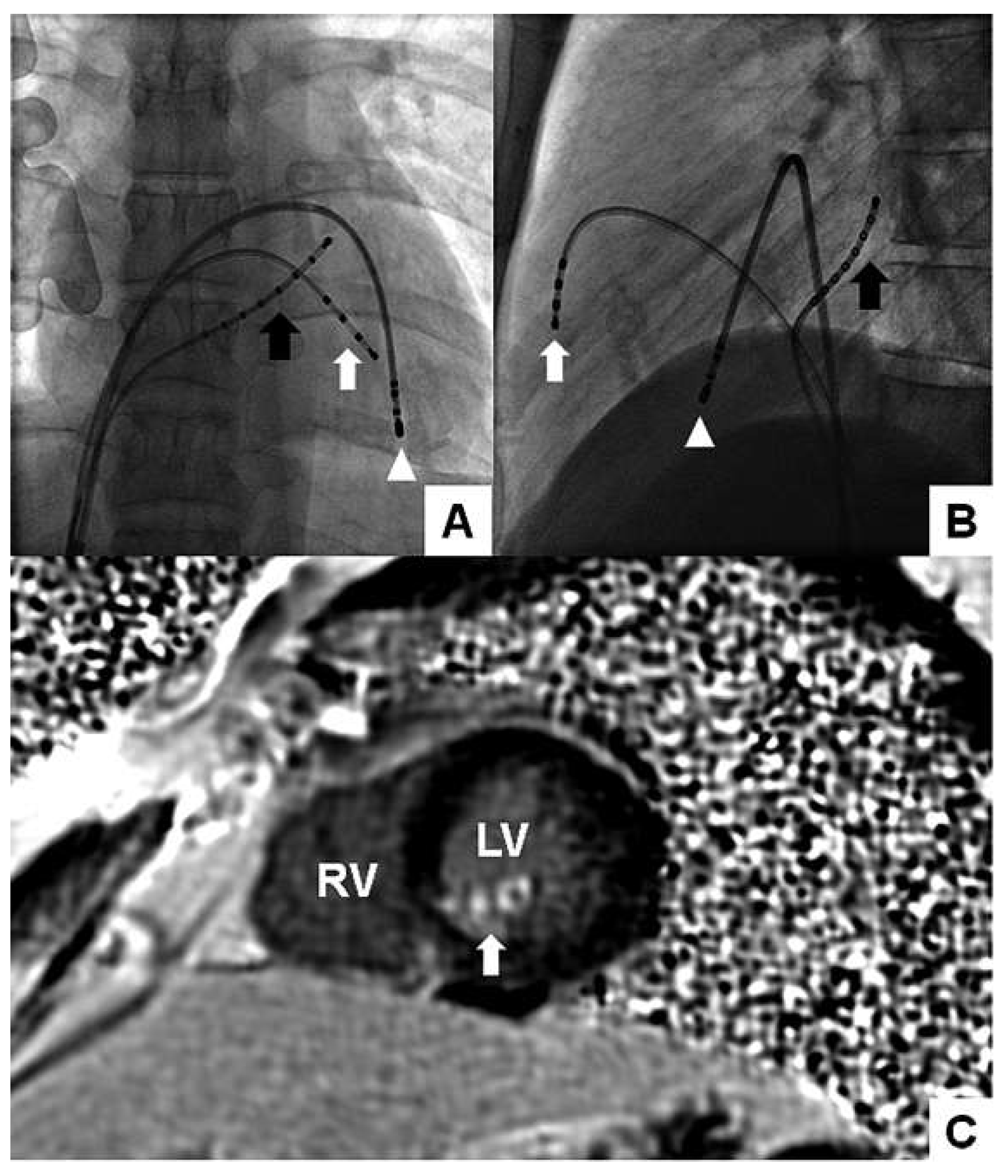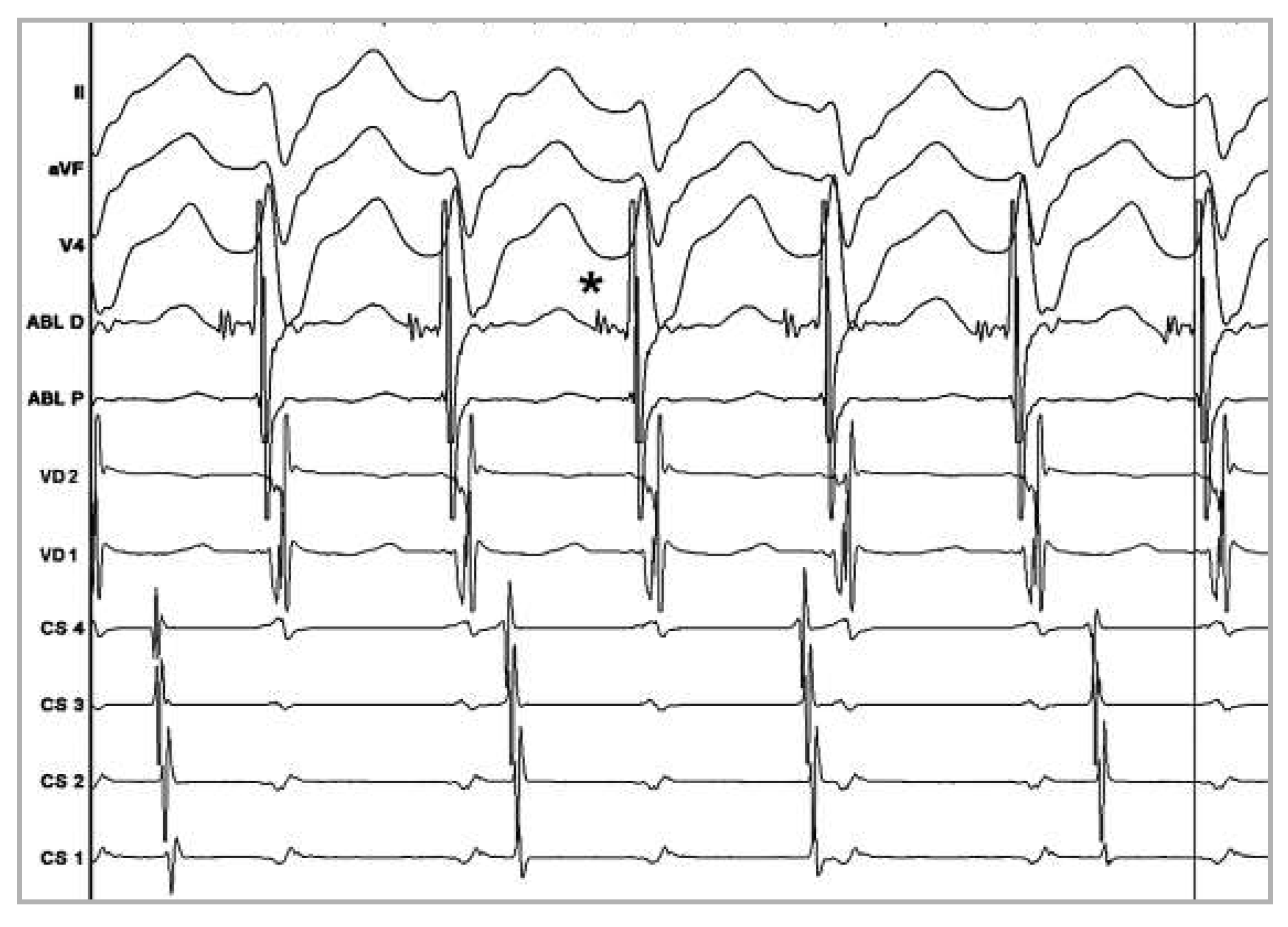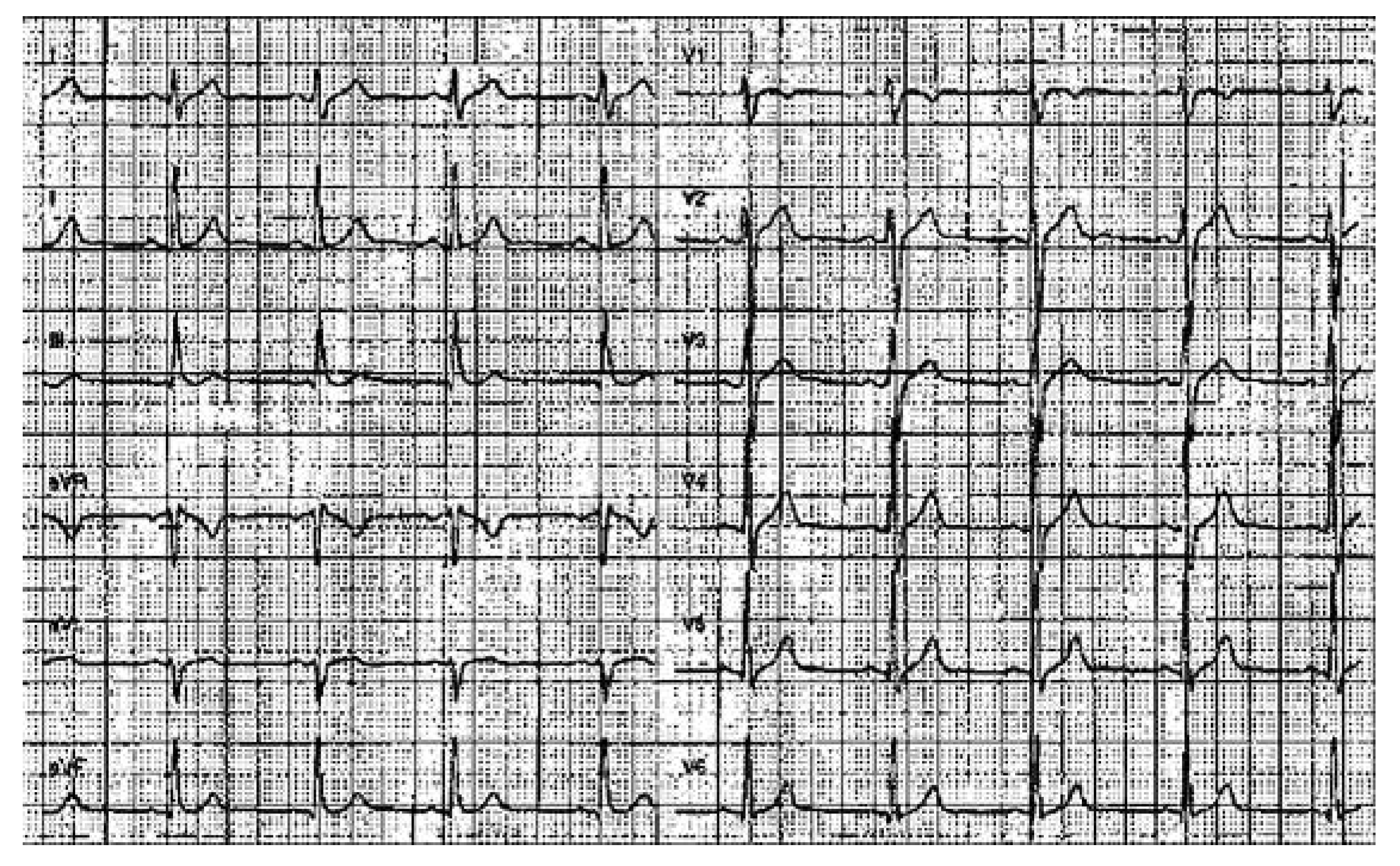Cardiac Memory Following Idiopathic Fascicular Left Ventricular Tachycardia
Abstract
Case report
Funding/potential competing interests
References
- Tsuchiya, T.; Okumura, K.; Honda, T.; Iwasa, A.; Yasue, H.; Tabuchi, T. Significance of late diastolic potential preceding Purkinje potential in verapamil-sensitive idiopathic left ventricular tachycardia. Circulation 1999, 99, 2408–2413. [Google Scholar] [CrossRef] [PubMed]
- Rosenbaum, M.B.; Blanco, H.H.; Elizari, M.V.; Lazzari, J.O.; Davidenko, J.M. Electrotonic modulation of the T wave and cardiac memory. Am J Cardiol. 1982, 50, 213–222. [Google Scholar] [CrossRef] [PubMed]




© 2012 by the author. Attribution - Non-Commercial - NoDerivatives 4.0.
Share and Cite
Park, C.-I.; Gentil, P.; Carballo, D.; Tran, N.; Monnard, S.; Shah, D. Cardiac Memory Following Idiopathic Fascicular Left Ventricular Tachycardia. Cardiovasc. Med. 2012, 15, 224. https://doi.org/10.4414/cvm.2012.01684
Park C-I, Gentil P, Carballo D, Tran N, Monnard S, Shah D. Cardiac Memory Following Idiopathic Fascicular Left Ventricular Tachycardia. Cardiovascular Medicine. 2012; 15(7):224. https://doi.org/10.4414/cvm.2012.01684
Chicago/Turabian StylePark, Chan-Il, Pascale Gentil, David Carballo, Nam Tran, Simon Monnard, and Dipen Shah. 2012. "Cardiac Memory Following Idiopathic Fascicular Left Ventricular Tachycardia" Cardiovascular Medicine 15, no. 7: 224. https://doi.org/10.4414/cvm.2012.01684
APA StylePark, C.-I., Gentil, P., Carballo, D., Tran, N., Monnard, S., & Shah, D. (2012). Cardiac Memory Following Idiopathic Fascicular Left Ventricular Tachycardia. Cardiovascular Medicine, 15(7), 224. https://doi.org/10.4414/cvm.2012.01684



